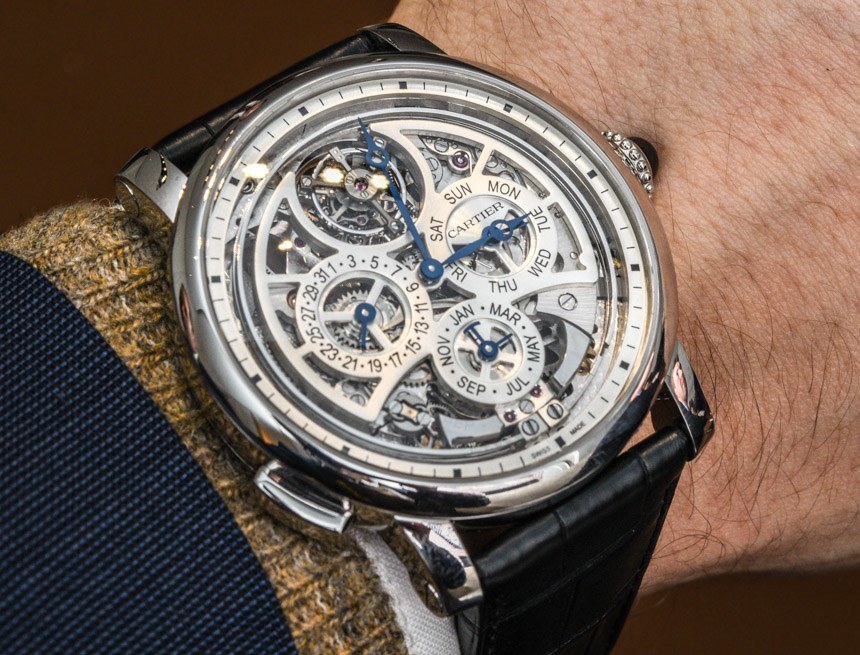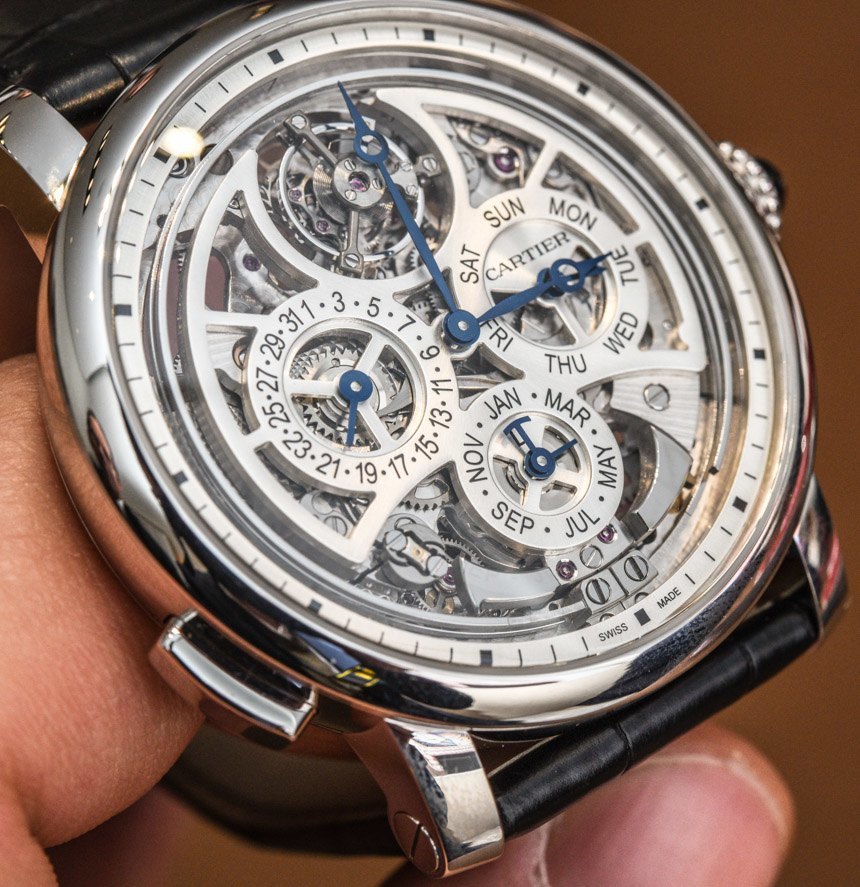 Written by Will Kaufman for aBlogtoWatch
Written by Will Kaufman for aBlogtoWatch
Released last year at SIHH 2015, the Cartier Rotonde de Cartier Grande Complication made a powerful debut, claiming the title of the most complicated Cartier watch ever produced. After numerous impressive and unique ventures dedicated to pushing the boundaries of watchmaking – just think of the Cartier ID2 watch with a vacuum inside its case or this Astrocalendaire – Cartier really is flexing its muscles here in an effort to show off its capabilities and knowhow in more traditional segments of haute horlogerie. The result is a symphony of 578 parts that took five years to develop and required fifteen weeks to complete.
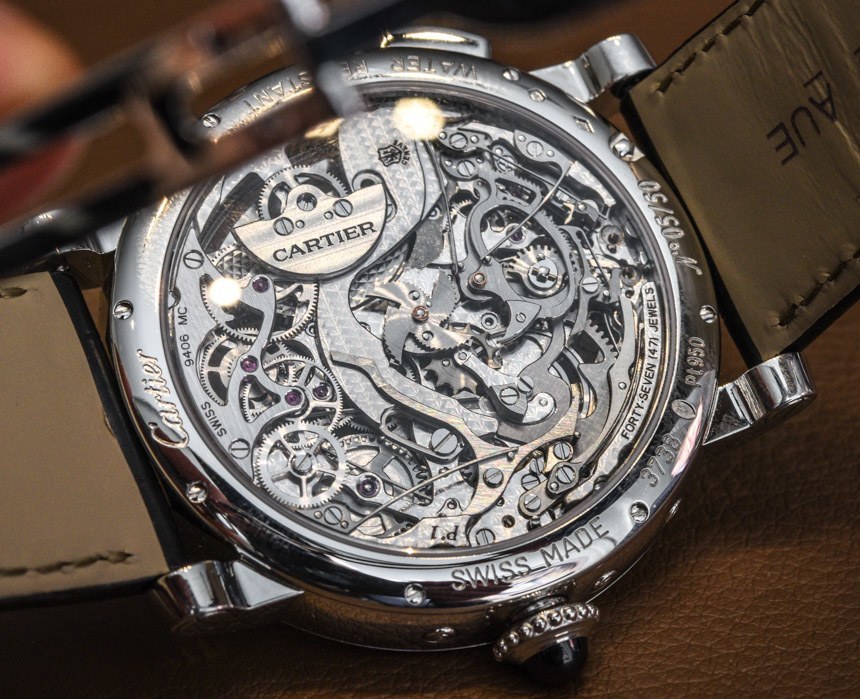
To really appreciate how far Cartier has come as a watch manufacturer, let’s take a brief look at the company’s history. The Cartier Rotonde De Cartier Grande Complication is supposed to act as a critical marker on the timeline of the brand and its evolution from jewelry maker to one that also produces some of finer mechanical watches out there. Cartier has been designing high-end jewelry for nearly 170 years, and they have been in the watch game for a bit shorter time than that, since the introduction of the square-bezeled Santos pilot watch (reviewed here) from 1904. Since then, Cartier’s mechanical watches have used movements made by the likes of Jaeger (since 1937, known as Jaeger-LeCoultre), Audemars Piguet, Piaget, and of course, ETA.

To eventually be able to offer a wider range of its watches with in-house manufactured calibers, Cartier has established its state-of-the-art manufacture in La-Chaux-de-Fonds in 2001, and expanded it further in 2007, so that this vertically integrated facility (meaning that the absolute majority of necessary components are made here) also features timepiece research and development departments. In that same year, Cartier’s parent company, Richemont SA, purchased the Geneva-based facilities of Manufacture Roger Dubuis, a producer of Geneva Seal movements. Because for a movement to be awarded the Geneva Seal it not only has to meet certain strict aesthetic (and now, timekeeping) requirements, but the movement itself also has to be manufactured in the canton of Geneva, Cartier moved ten of its master watchmakers into the facility.
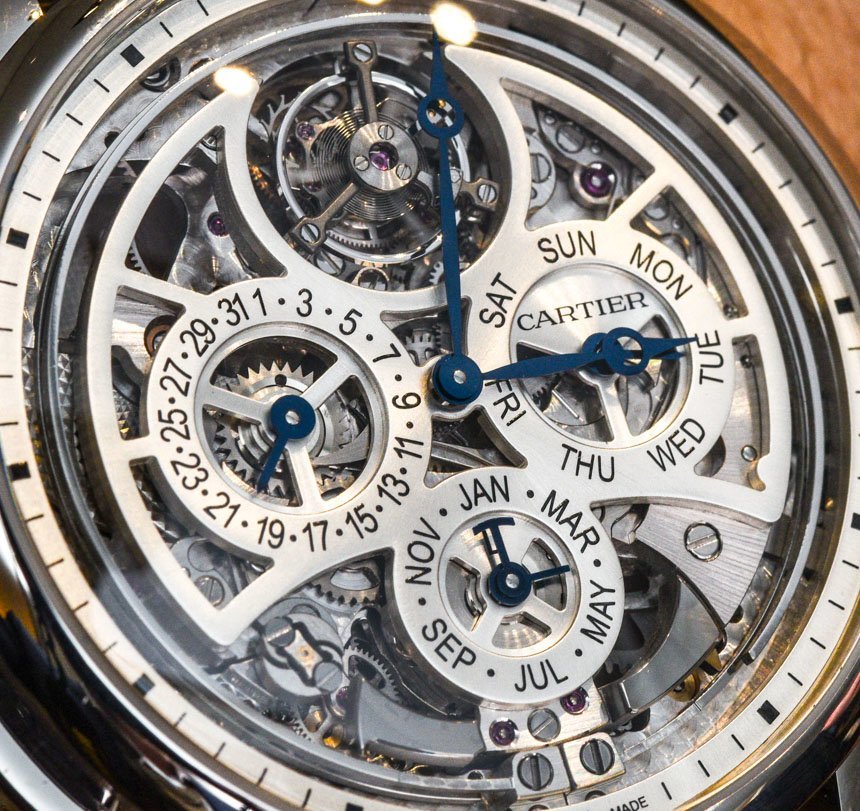
This leads us to the Cartier Rotonde de Cartier Grande Complication because it is this latter facility where all the pieces of its movement fall into place. The 9406 MC movement inside comprises 578 components, with each movement requiring ten weeks to decorate all its parts to the Geneva Seal standard and another five weeks to assemble.
Features include a flying tourbillon, perpetual calendar, and a minute repeater, any one of which, taken on its own, is an impressive horological feat. While there is no consensus or golden rule to follow on this, generally speaking, for a watch to be called a Grand Complication, its set of features has to include one of each of the following complications: an astronomical complication (perpetual calendar, for example), a chiming complication (minute repeater, sonnerie) and a stopwatch function (chronograph or split-second chronograph).
This piece we are looking at is indeed very complicated but, in the traditional sense, misses out on being a grand complication by not having some sort of a chronograph function. Is that really an issue or a deal-breaker on the most complicated Cartier watch ever made? Surely not – especially when we consider that Cartier has managed to package all of the 9406 MC’s complications in a skeletonized movement that measures a mere 5.5 millimeters thick. That is remarkably thin and is partly achieved by using a micro rotor for the caliber’s automatic winding in lieu of a full-size rotor.
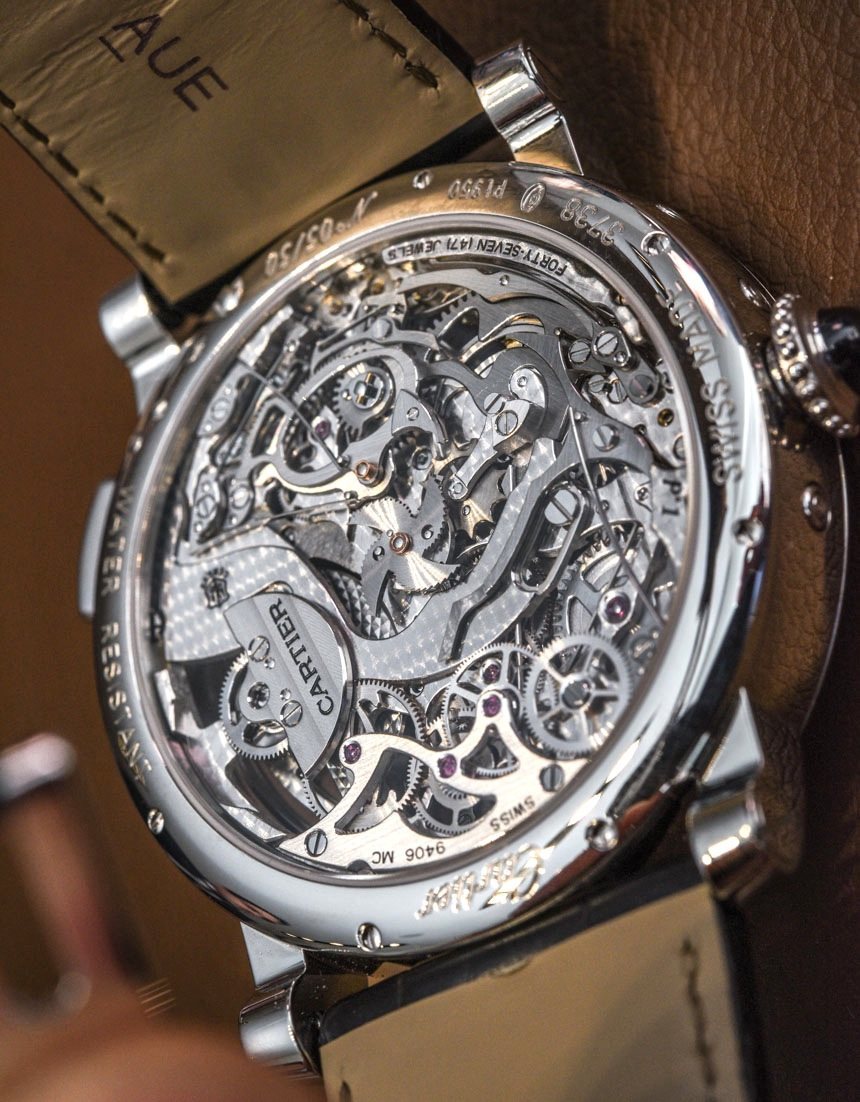
A fascinating detail that anyone who only lists the features of the Grand Complication possibly glosses over is the size and hence questionable necessity of that micro-rotor. In the image above, you will see that it is extremely small and thin – even by micro-rotor standards – which certainly doesn’t help when one considers the often inferior winding efficiency of such small-sized rotors in movements. Also, although the 5.5 millimeter overall thickness for the movement is a fantastic achievement in and of itself, it just boggles the mind to think that it could have been even slimmer, were it not for the automatic winding. Anyhow, the 9406 MC caliber runs at 3 Hertz (21,600 beats per hour) and boasts 50 hours (or two full days and then some) of power reserve – again, impressive stuff for a movement of such complexity and thickness.
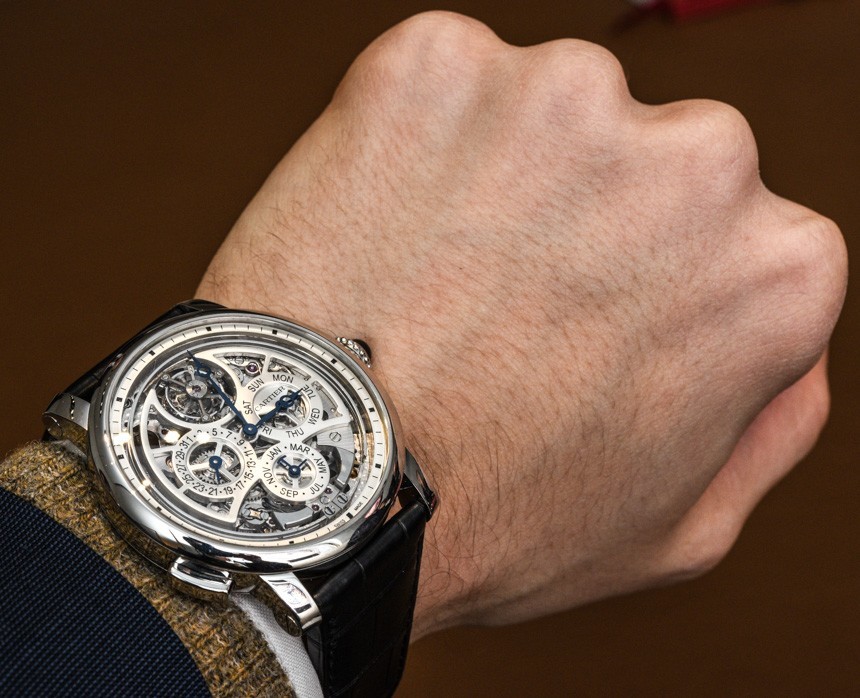
At 45 millimeters wide, although the Cartier Rotonde de Cartier Grande Complication looks bold on the wrist, thanks to its slim bezel, cleverly sized and shaped lugs, and a total thickness of 12.6 millimeters, it is also beautifully proportionate. It is great to see that Cartier, one of the few brands with a truly coherent design DNA across most all its collections, has not sacrificed aesthetics and wearability for the sake of mechanical complexity.
Thanks to the heavily skeletonized dial – which still has a marked flange ring, nicely visible sub-dials, and a set of perhaps a-tad-too-thin Breguet-style hands – basically, every function of the Cartier Rotonde De Cartier Grande Complication movement is visible through either the dial or through the crystal case back. Thankfully, gone are the days when watches demanding six-figure prices were afraid to show off months’ worth of decorating work, hiding so much of it under dull, solid dials!
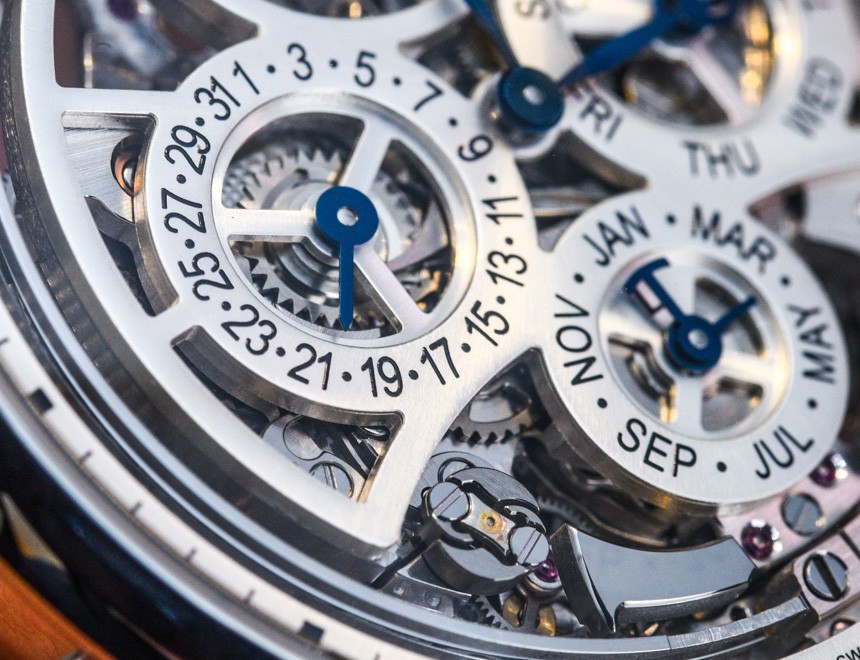
The case is made of 950-platinum and comes on a black alligator strap that uses a double-adjustable, 18-karat white gold buckle. The beaded crown, set with a sizable sapphire cabochon, is a distinctly Cartier design element. Watches across their range wear similar crowns, though the beading and the sapphire are both much more pronounced on the Rotonde de Cartier line. The silver-ish colored, sunray-brushed dial blends well with the finish on the movement it reveals, and the blued steel hands provide a nice contrast and add a pop of color. And while no one is likely to take a Cartier Rotonde De Cartier Grande Complication swimming, it is water resistant to 30 meters.

